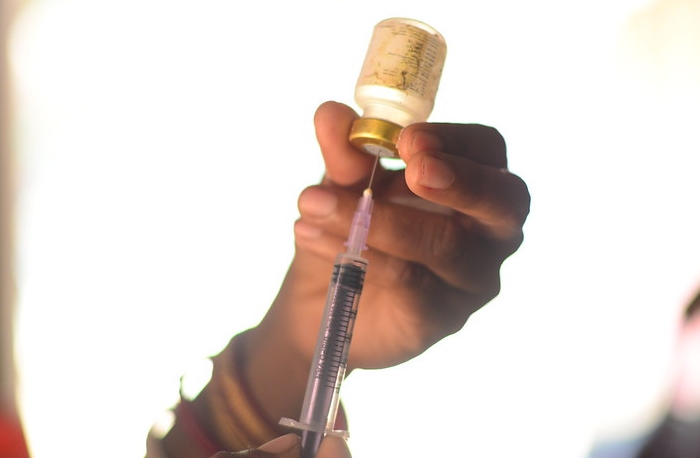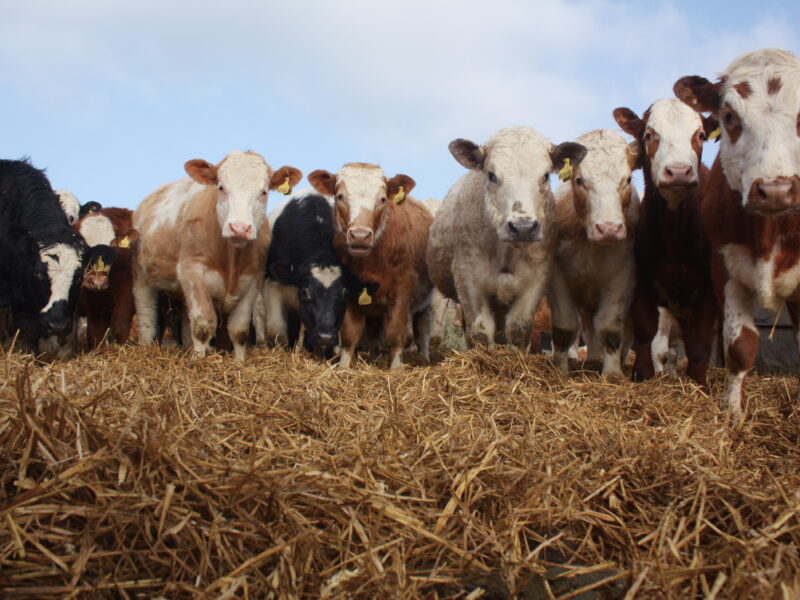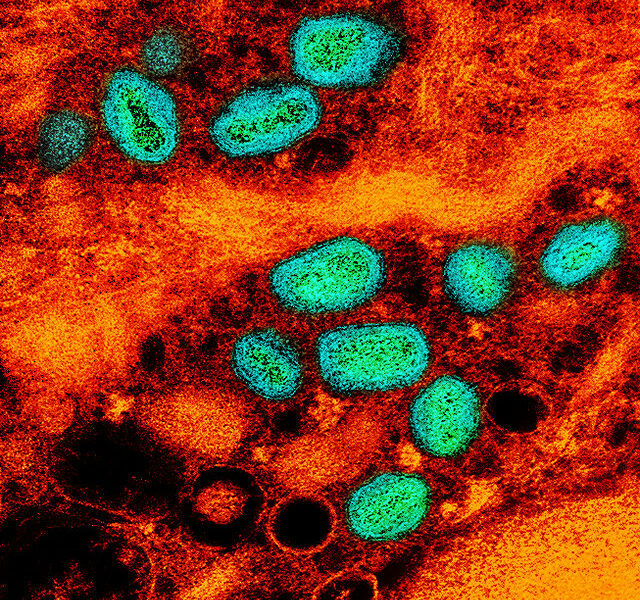By: Kyle Martin
Image courtesy of GALVmed via Flickr Creative Commons
The international fight against HIV/AIDS is set to make large advancements in the coming years thanks to the promising outlook of three developing HIV vaccines in late-stage trials. Hopes for seeing the end of HIV/AIDS in this lifetime have not been this high since 1984, when Secretary of Health and Human Services Margaret Heckler predicted that an HIV vaccine would be ready for human trials within two years [5]. The three vaccines – HVTN 702, Imbokodo, and Mosaico – are all in their Phase 3 efficacy trials, meaning that they showed enough effectiveness to move forward with large-scale human trials [1].
Vaccine trials can be a very long, expensive, and arduous process. Only 22% are developed vaccines are successful in getting through the process and onto market, so trial and error is common in vaccine manufacturing centers [7]. Once a need for a new vaccine is established, the drug goes through preclinical trials, often in animals, to assess safety and efficacy. Afterwards, the vaccine goes through four phases of human clinical trials, which all test for safety, efficacy, and best practices for administration. Phase I is usually in a population of around fifty low-risk individuals, Phase II in a larger population ranging up to 1,000 at-risk individuals, and Phase III can be tested to up to 10,000 at-risk individuals. After successfully proving safety and efficacy in Phase III, the vaccine is good to go to market and be distributed to the masses. Phase IV is a continuous phase where the vaccine is monitored in observational studies to maintain safety and further understand the long-term effects of the drug [7].
HVTN 702 Vaccine
In 2009, an HIV/AIDS vaccine known as RV144 was able to show that through vaccination efforts, HIV infection rates dropped by 31 percent in Thailand. However, the vaccine was determined to not be effective enough, and trials stopped causing the vaccine to fail [2]. Out of the ashes of RV144 rises HVTN 702, which started clinical trials in South Africa in 2016. The HVTN vaccine aims to build upon the backbone of RV144 and provide an even broader, more sustainable protection against the virus. The vaccine targets the main HIV subtype in South Africa, HIV-1 clade C [6] and many in the scientific community are hopeful for its success.
Clinical trials for HVTN 702 completed enrollment of about 5,400 men and women this summer and results from the study are expected as early as late 2020 or early 2021 [6].
Imbokodo Vaccine
Unlike HVTN 702, Imbokodo uses “mosaic” immunogens, which targets a wide variety of HIV strains. Using four injections across a one year period, the goal is to provide immunity to multiple HIV strains that are seen as responsible for the HIV pandemic [4]. With the ever-increasing rise of international travel, this is seen as an imperative piece of an effective vaccine.
The study, set in 20 sites across Malawi, Mozambique, South Africa, Zambia, and Zimbabwe, completed enrollment of 2,600 women in May of 2019. Initial results from these trials are expected by 2021 [4].
Mosaico Vaccine
Like Imbokodo, the Mosaico vaccine is comprised of “mosaic” immunogens, though their formulations are slightly different. The largest difference between the two studies is the study population. While Imbokodo is currently tested amongst women in Africa, Mosaico is focused on homosexual men and transgender individuals in the United States, Latin America, and Europe [3]. Testing the vaccine across multiple at-risk groups and across many geographic regions will provide higher global generalizability, if the vaccine is found effective.
Phase 3 of clinical trials for the Mosaico vaccine began in November 2019, marking the start of the study and results are expected in 2023 [3].
Conclusion
The HIV vaccines currently in development would require multiple doses across a single year, which creates multiple implementation challenge. Some of these may be getting individuals in rural settings adequate access to the vaccines so that they can come several times across a year, creating an effective education campaign so that individuals understand the need to come several times, and ensuring adequate clinic-level infrastructure to be able to track doses of individuals and store large quantities of the vaccine. However, an effective vaccine could serve as a cornerstone in the creation of simpler-to-implement vaccines. According to Dr. Anthony Fauci, the director of the National Institute of Allergy and Infectious Diseases (NIAIDS), a vaccine that is even 50 to 60 percent would be enough to “turn the epidemic around” when used in conjunction with other highly effective HIV preventive methods such as PrEP and TasP [1].
For more information on PrEP, please visit https://www.cdc.gov/hiv/risk/prep/index.html.
For information on TasP, please visit https://www.cdc.gov/hiv/risk/art/index.html.
References
- Fitzsimons, T. (2019, December 1). HIV vaccine in 2021? Leading experts ‘optimistic’ about ongoing trials. Retrieved December 16, 2019, from https://www.nbcnews.com/feature/nbc-out/hiv-vaccine-2021-leading-experts-optimistic-about-ongoing-trials-n1092021.
- For first time, a vaccine helps prevent HIV. (2009, September 24). Retrieved December 16, 2019, from http://www.nbcnews.com/id/32997306/ns/health-aids/t/first-time-vaccine-helps-prevent-hiv/#.XfeJwehKjIV.
- Janssen Vaccines & Prevention B.V. (2019, May 27). A Study of Heterologous Vaccine Regimen of Adenovirus Serotype 26 Mosaic4 Human Immunodeficiency Virus(Ad26.Mos4.HIV), Adjuvanted Clade C gp140 and Mosaic gp140 to Prevent HIV-1 Infection Among Cis-gender Men and Transgender Individuals Who Have Sex With Cis-gender Men and/or Transgender Individuals – Full Text View. Retrieved December 16, 2019, from https://clinicaltrials.gov/ct2/show/study/NCT03964415?show_locs=Y#locn.
- Johnson & Johnson. (2019, May 29). Johnson & Johnson Announces Full Enrollment in Proof-of-Concept Efficacy Study of Janssen’s Investigational HIV Preventive Vaccine. Retrieved December 16, 2019, from https://www.jnj.com/johnson-johnson-announces-full-enrollment-in-proof-of-concept-efficacy-study-of-janssens-investigational-hiv-preventive-vaccine.
- McCoy, J. (2019, December 2). SPH Bicknell Lecture: Is Eradicating AIDS Feasible? Retrieved December 16, 2019, from http://www.bu.edu/articles/2019/sph-bicknell-lecture-is-eradicating-aids-feasible/.
- NIH. (2016, November 27). First New HIV Vaccine Efficacy Study in Seven Years Has Begun. Retrieved from https://www.niaid.nih.gov/news-events/first-new-hiv-vaccine-efficacy-study-seven-years-has-begun.
- Hurford, P. (2017, June 28). How long does it take to research and develop a new vaccine? Retrieved from https://forum.effectivealtruism.org/posts/8qMDseJTE3vCFiYec/how-long-doe…


